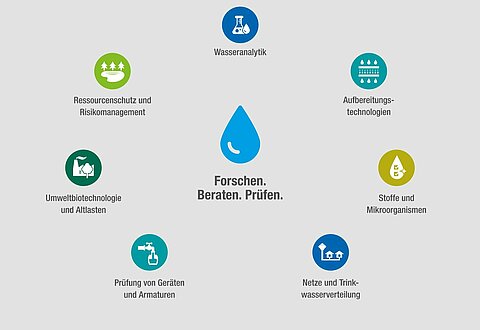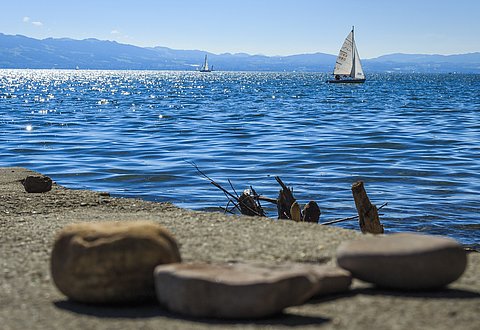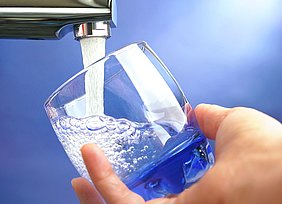The vast array of chemical substances in production and use means that a considerable proportion of them can be detected in almost all environmental compartments. The existing European and national legal regulations (in particular REACH) do not entirely prevent substances that have not yet been assessed from entering the environment, including those that are only slowly degraded, are highly soluble in water and are not or hardly removed by underground passage and/or drinking water treatment. Furthermore, the development of instrumental trace analysis has enabled the detection of an increasing number of substances with high sensitivity, down to the pg/L-range. Consequently, substances for which no limit or guideline values exist are frequently found in drinking water in very low concentrations and for limited periods and locations. In such cases, a prompt toxicological assessment is required.
In light of the aforementioned shortcomings, the Federal Environment Agency (UBA) has devised the concept of ‘health-related indication values’ (HRIV, in German: "GOW") for the assessment of substances in drinking water that have not yet been assessed or only partially assessed. The objective of an HRIV/GOW is to bridge the analytical detection of a contamination in drinking water above 0.1 μg/L with the existence of a guide or limit value.
As part of the project, a review will be conducted in collaboration with colleagues from the UBA to assess the viability and practicality of the HRIV/GOW concept in the context of implementation. The perspectives of water suppliers, who are directly affected by official directives and measures in the event of a HRIV/GOW exceedance, will also be considered. The project will include comprehensive surveys of authorities and water supply companies to gain insight into their experiences. The resulting optimization and strengthening approaches will be discussed with the health authorities and water supply companies at a workshop.


![[Translate to English:] Prüfstelle-Produktprüfung_Teststand Test centre and product testing](/fileadmin/_processed_/0/9/csm_TZW-Karlsruhe_Pruefung_Geraete-Teststand_444204ae51.jpg)

























